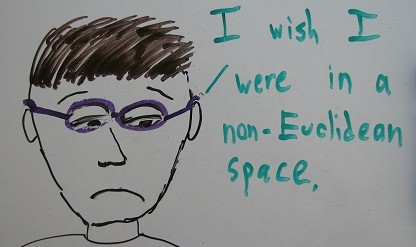Today’s Glimpse into the Virtual Home
Earlier, I wrote about the concept of the Virtual Home as the center of your activities in virtual reality. It is personal space, lounge, hangout, and launching pad. There are a number of ways to handle the user interface for the Virtual Home.
We’re going to quickly look at VirtualReality.io, cover the concept for the Rift Navigator, and go back and pick up a great Virtual Home that I missed called Anarchy Arcade. After that, the conversation will switch gears to highlight a fundamental problem inside the Virtual Home (and virtual reality as a whole).
VirtualReality.io
VirtualReality.io is a no-nonsense launching pad for VR software. It doesn’t do a lot. It doesn’t have the personal space, lounge, or hangout. What it does do, though, it does correctly. They’ve got the launching pad covered for the novice user.
The user selects an application from a catalog of third party software and it installs it onto their system. When the user selects the installed program, the interface quickly moves out of the way, but returns when the application terminates. There is no need to remove a head-mounted display. At a basic level, a Virtual Home needs to behave similarly. Read More…
The Future of Vehicular Safety Communications Systems
This article is going to stray a little off-topic. Before the end, I’m going to bring it back to the topic of augmented reality and virtual reality. I hope you find it interesting.
As mentioned in my previous article, I’m taking some graduate level computer security courses as part of my continuing education. Right now, I’m taking a quick break from my project which investigates security vulnerabilities in next generation vehicular safety systems. These systems, under development today, have been given the green light by the National Highway Traffic Safety Administration.
If things go as plan, your vehicle will send and receive reports on position, speed, heading (and more) to surrounding vehicles. The road may transmit information to you such as posted warning signs (curve ahead), weather conditions, or upcoming road hazards. Read More…
A small break
You may have seen my interest security issues in articles like The Metaverse and the Virtual Home, Representing unknown avatars in high traffic public spaces, and especially Griefing and the Metaverse. This isn’t by chance.
In addition to my day-to-day job, I am taking some graduate level computer security courses as part of my continuing education. I’ve been able to explore how these general computer security concepts apply to the Metaverse in interesting ways.
The academic year is finally coming to an end, and I need to buckle down and get some assignments turned in. I’ll be taking a week or two off to wrap those things up, and then I’ll be back to writing more articles.
I’m trying to decide if I want to talk more about the Virtual Home, or a proposal for the structure of a modern Metaverse. If I talk about a modern Metaverse, I’d probably want to lay some more groundwork first. Thoughts?
On another note, I received an old book in the mail today. $7.22 shipped. As always, I embed no referral code, and I claim no relationship to the book, author, publisher, or seller (other than having purchased the book).
I’ve only had time to skim over it today. It has fourteen different articles written by academics in the 1990s. So far, it looks pretty good. It has some good sections (communications theory, applications, immersiveness), and a few dated topics (location-based VR entertainment, cyberpunk culture).
My copy is lightly annotated by its previous owner and, actually, that’s something that I appreciate because they’ve picked out some of the good bits for me. If you can pick this one up cheap, it is probably worth adding to your library.
That’s all for today. See you again shortly.
Griefing and the Metaverse
If you’ve been following some of the posts here on Metaversing, you may have noticed a slant towards planning and design issues. This isn’t by accident. Many issues seem innocent or almost trivial, but need to be carefully considered before jumping into an implementation. A well thought-out design can save countless hours of trouble down the road in the systems development life cycle.
Today, I have an easy prediction: the Metaverse is going to be the stuff of legends for hackers, griefers, trolls, vigilantes, security researchers, and spy agencies. If you’re already familiar with the scene at the top of this article, then you know what we’re looking at: an in-world denial of service attack. Do you see it? Is it the guy in the pool with the antlers on his head? No? To explain, let’s go back to design. Read More…









